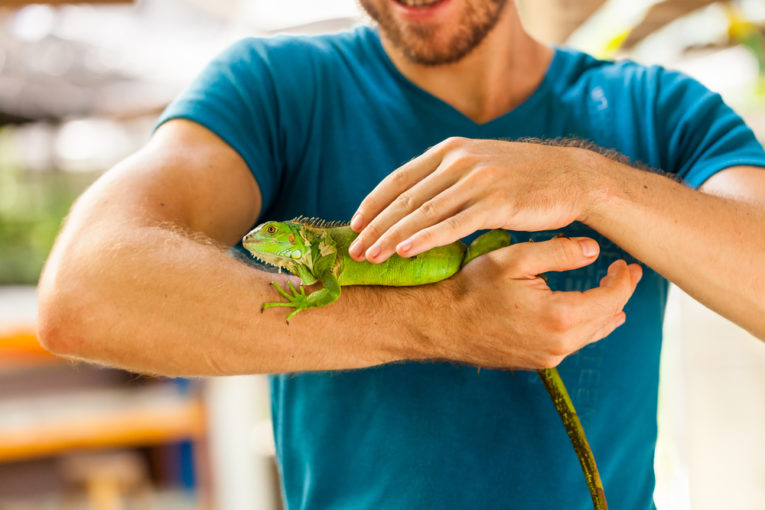Keeping reptiles as pets is an increasingly popular choice. This could be due to the wider variety of equipment that is now available, which allows us to care for reptiles in an easier and more affordable fashion than ever before.
However, as with any new pet, we should not take on the responsibility too lightly. Reptiles need as much care and attention as a cat or dog, need appropriate living conditions and the correct diet in order to survive and thrive. We have put together some of the main requirements you should take into account when welcoming your exotic new pet into your home.

Creating the correct environment
Much of your new reptiles life will be spent inside an enclosure such as a vivarium or terrarium, so be sure that;
- It is in good condition without cracks.
- It is large enough for your pet to move around.
- It is large enough to allow for your reptile to grow if it is still young at the time of purchase.
- That there are hiding places within the enclosure for your reptile to keep out of sight, something they would naturally do in the wild. An Exo Terra Vivarium Hide Out Cave would ensure they have a dark and cool space to relax in private.
- Add some plant life to the enclosure to introduce an interesting feature for your pet. If you choose to use real plants, ask your vet or a reptile expert for advice on what is safe to use. You will not want your pet to become ill from eating plant life that is toxic to them. Otherwise air on the side of caution and use fake foliage, such as a Zoo Med Amazonian Phyllo Plant.
- Include a basking spot. This could be a surface on top of the hiding place or the addition of some rocks for your reptile to lie on. Ensure that this spot is close to a thermal lamp or other heat source, as it is very important for your reptile to relax in the heat as it would have done in the wild.
Heat and light is very important
As reptiles are cold blooded, they need our help for their bodies to generate the heat they need to survive. In the wild they can move around to places of adequate light and heat as needed, so when keeping a reptile in your home be sure to;
- Use heat lamps to control the temperature in the enclosure, keeping one end warm and the other a little cooler. Be sure to monitor the temperature regularly.
- Do not fit a heat lamp where your reptile can touch it. They may have scaly thick skin, but they will burn as badly as any other animal if it comes into contact with direct heat.
- Introduce heat mats to give your reptile warm places to sit and sleep. Try a HabiStat Reptile Heat Mat which can be placed above or below your pet and will give the illusion of basking in the sun.
- UV light is also very important to reptiles, as it will give them the vitamin D that they need to survive, particularly in the case of tortoises and lizards. As you should not be keeping your reptiles outdoors due to the low temperature in this country, you must provide an artificial light in their enclosure. An Exo Terrra Day and Night LED Light is perfect for other reptiles that do not need UV light, such as snakes, geckos, frogs, newts, salamanders, spiders, scorpions and insects.
Follow these tips and you will be off to a good start with your new reptile pet. In part 2 of our Caring for your Reptiles blog, we will look at your reptile’s diet, to see which foods they should be eating and asking how best we can keep them healthy.
Sources
http://www.reptileexpert.co.uk/CreatingRightEnvironmentReptile.html